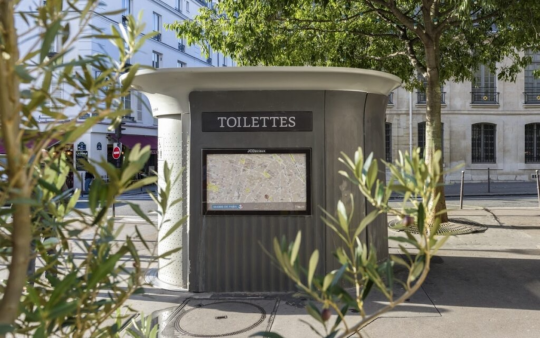Prague takes an important step towards construction of the new Vltava Philharmonic Concert Hall
Prague has taken yet another important step towards construction of the new Vltava Philharmonic Concert Hall in the Bubny–Zátory section of Holešovice, with the selection of a consortium led by world-renowned Henning Larsen Architects to complete a feasibility analysis. The results will be used as one of several important supporting documents as the city decides whether to continue with the project. If it moves forward, the project is intended to kick off the gradual revitalization of this neglected area of Holešovice.

After more than a decade of debate and discussion, the project for the construction of a modern concert hall in Prague is finally starting to take shape. A consortium led by Henning Larsen, working hand in hand with Buro Happold and AEA Consulting, has won the public tender commissioned by IPR Prague to prepare a feasibility analysis for the new venue.
All of the consortium members have extensive experience in preparing and executing projects for state-of-the-art concert halls in Europe. These projects include, for example, the Harpa Concert Hall in Reykjavik, Iceland, the Danish National Opera House in Copenhagen, and the building for the Polish National Radio Symphony Orchestra in Katowice.
“Modern architecture in Prague cannot end with the Dancing House. We don’t want to turn Prague into an open-air museum. I would love to see more buildings with global impact built here, and I believe that the new concert hall could be one of those buildings,” saysZdeněk Hřib, Mayor of Prague.
“The prestige and expertise of the Henning Larsen-led consortium from similar projects around the world is a guarantee of quality for the feasibility study, which will guide future decisions about this project. Prague not only needs a modern concert hall, Prague deserves it. We really should try to pay off the debt of many generations of music lovers. At the same time, we want and need to be prudent, and for that reason, we are preparing a detailed analysis to see whether we should continue and take this project to its next stages,” said Petr Hlaváček, Deputy Mayor responsible for territorial development of the capital city.
Prague chose to have a detailed feasibility analysis prepared due to the project’s size and complexity. The plan to build a new concert hall in Prague dates to 2010 (although the idea was already entertained in the 1930s), with all political representations of the capital city gradually warming up to the idea. The feasibility analysis will be an important first step in fulfilling this vision.
Experts from the Henning Larsen-led consortium will investigate all of the potential economic issues of this project, including operational costs, and formulate various alternatives for the new building’s use. The analysis, scheduled for completion by the end of 2020, will also propose optimal variants of the concert hall’s overall concept and its siting on the left bank of the Vltava. Prague City Hall will use the study to help guide the decision on whether to give this project the final green light.
If it moves forward, construction of the Vltava Philharmonic should also trigger the gradual revitalization of the entire Bubny–Zátory area. The city wants to transform this neglected area into a new city neighborhood and new center for the capital, attractive to both residents and tourists. The next stage would be an architectural competition to produce complete project documentation for the selection of a general contractor, after which construction would commence. Under the preliminary schedule, construction could start as early as 2027, with completion planned for 2032. The total investments required have not yet been precisely calculated, though the anticipated costs should also come from the feasibility analysis.
The existing concert halls in Prague-- Smetana Hall at the Municipal House and Dvořák Hall at Rudolfinum-- do not meet concert hall standards for the twenty-first century. The last concernt hall was built in Prague over 100 years ago (Smetana Hall in 1912). Compared to other, sometimes smaller European cities, this is an indisputable shortcoming.
You might also be interested in

Two public hearings will help Prague residents get to know the draft Metropolitan Plan.

According to Prague’s City Councilors, public toilets should be more accessible.

